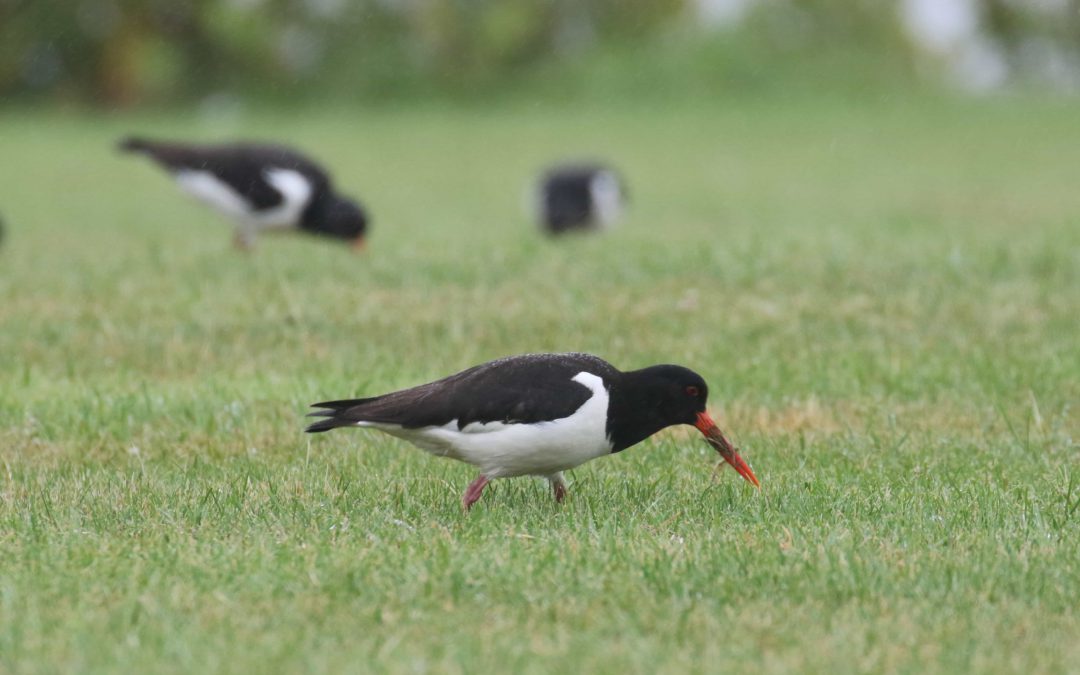A visit to RSPB Frampton Marsh is always worth the drive into Lincolnshire to this excellent reserve which is rewarding at any time of year.
November still brings the possibility of passage birds as well as some long staying winter visitors.
Our visit began with a good number of members gathering in the car park to examine the birds to be seen on the flooded meadow next to the car park.
Here we located large numbers of Wigeon enjoying the landscape generated by the work of the RSPB along with Godwits, Curlew, Lapwing and on the more distant ponds/scrapes Teal, Mallard and Shoveler.
From here and before setting off down the road towards the embankment we visited the small centre and made contact with an old friend of the Society Dr Chris Andrews who we know well from his time at Fineshade on the Red Kite project.
This brief stop gave us time to view the feeders Goldfinch, Greenfinch, House Sparrow, Great Tit and Blue Tit being observed. Out on the water were many common species plus a small party of Whooper Swans alongside a solitary Greenshank.
We then took a leisurely stroll down the road examining the fields and drains as we went finding more Godwits and Lapwings plus Curlew and Redshank and Golden Plover. There was a section which had been planted with Sunflowers earlier in the year and this was providing a food supply still for many finches.
Whilst taking in these birds we heard but did not see Cetti’s Warbler in the reeds along the drain, then to our great delight we became aware of a Merlin sat on a raised bit of ground surveying the prospective food sources, mainly we suspected Pipits and perhaps Starlings.
After a while we were treated to the Merlin taking off and harassing the bird flocks and giving chase to some of the smaller birds.
Eventually we decided to finish our walk to the seawall, here we came across numerous Brent Geese and Redshank.
The reserve had in previous weeks been subject to a large amount of landscaping and some of the paths at the far end were not good so although a few brave souls went all the way round most of us headed back to the centre via the two main hides where again we added a few more common species to our list.
It now being overdue for lunch we settled at the tables in the visitor centre and watched the birds coming and going on the feeders and the water in front of us, excitement mounted as a bird of prey landed in a dead tree out in the mere but this proved to be a Kestrel not Merlin.
We finished our visit with more time in the car park examining the wet meadow but nothing new was found and we all set off home I think having had an enjoyable morning at this premier reserve.
Peter Scott
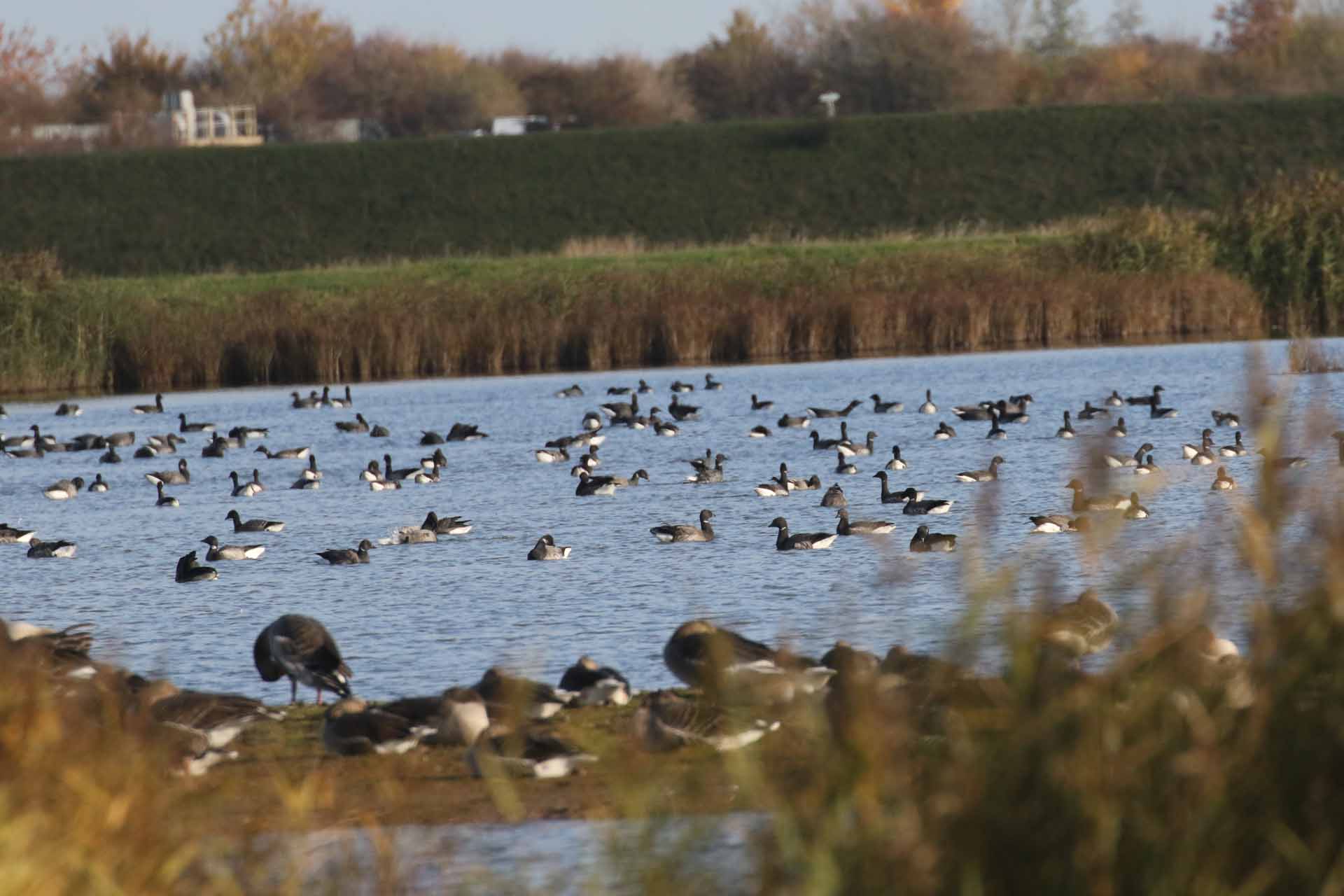
BRENT GEESE
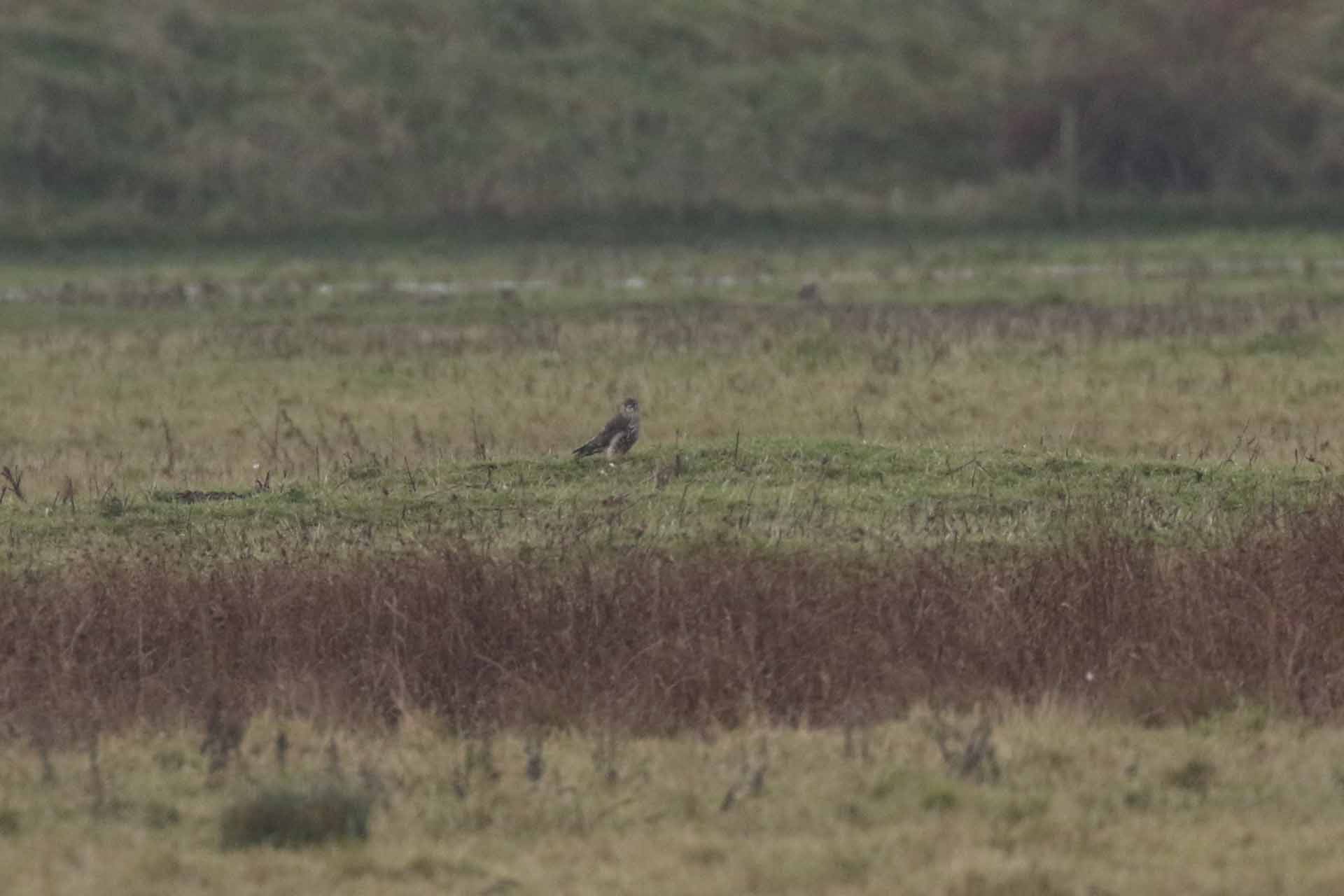
MERLIN
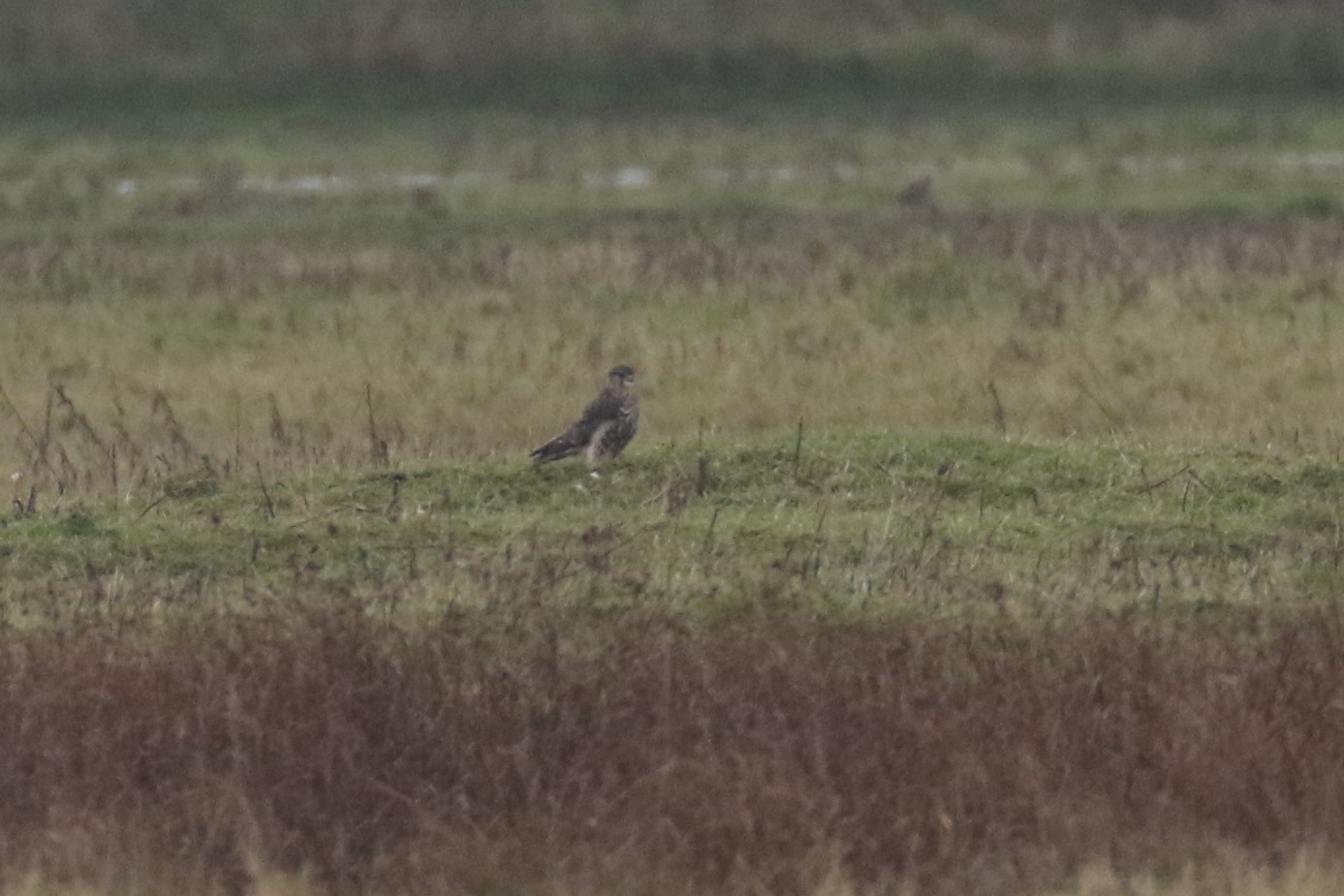
MERLIN
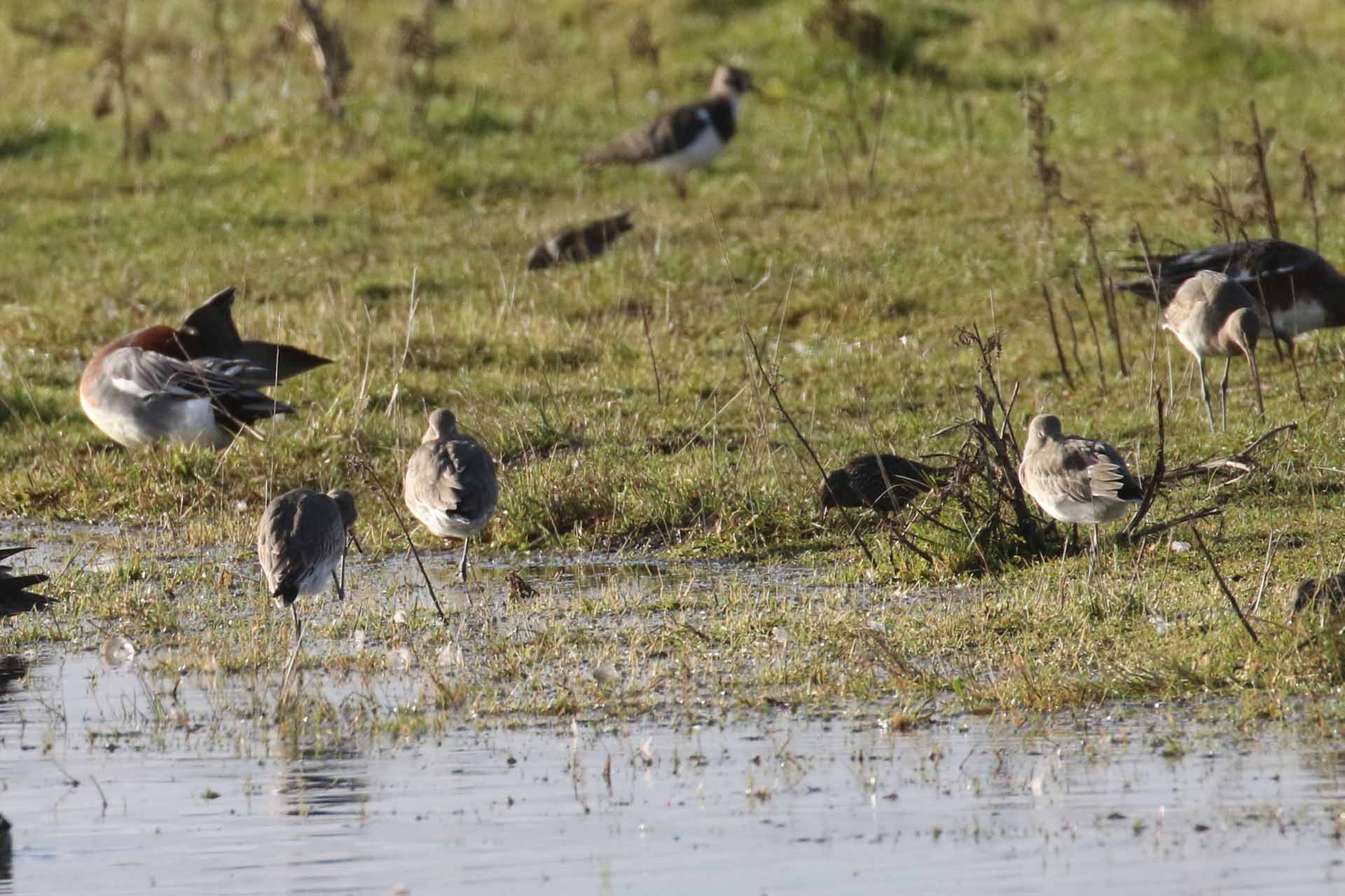
GODWITS
